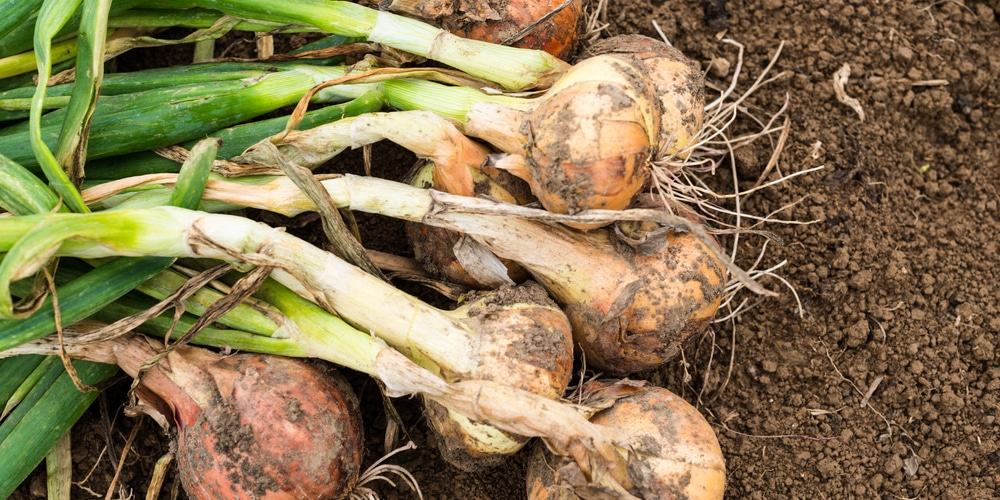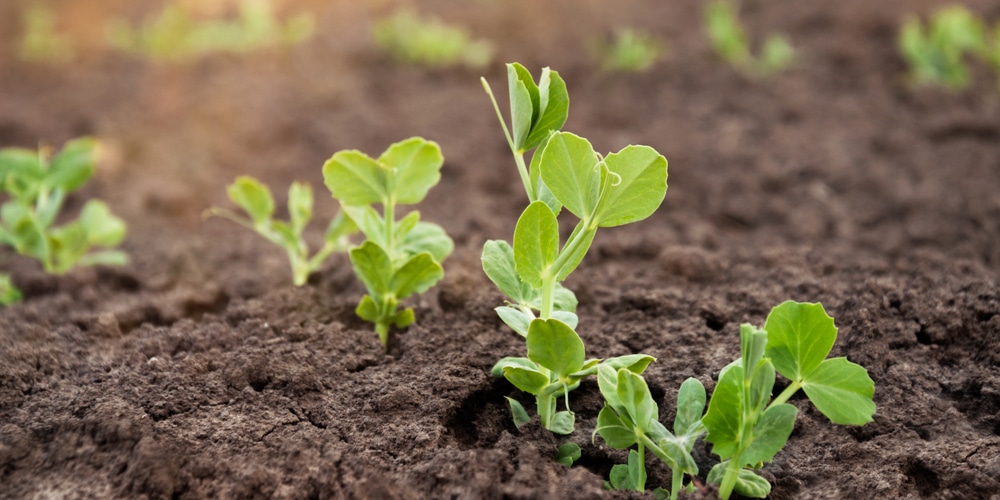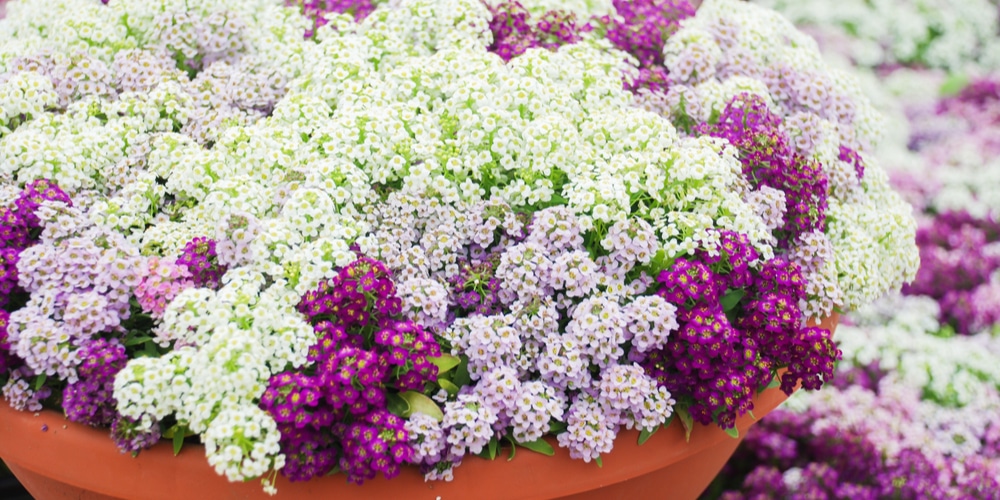Sweet potatoes are starchy vegetables with a sweet taste that thrive in warm temperatures. While in some parts of the world, this tuberous plant is also called “yam,” the two are only close relatives. You can find sweet potatoes in colors ranging from purple to orange. The different colors yield different nutritious content but don’t alter the taste.
Native to Central and South America, these plants are not hard to grow. They prefer high temperatures and rich soil but can grow well in various conditions, provided that they receive attentive care. However, choosing the proper companion plants can help you support these tubers’ growth and ensure thriving crops.
Companion planting is a method many gardens use to protect and enrich their crops. It can repel harmful insects, attract pollinators, and encourage better taste and faster growth.
To learn more about sweet potato companion plants, keep reading. In this essential guide, you’ll find the plants we recommend you add to your garden to boost your sweet potatoes’ production.
Herbs

If you want to keep things simple and get all the benefits of companion planting while taking some spices in return, you should consider planting herbs close to your sweet potatoes. The herb category includes various species, not all beneficial to your potato plant. However, in general, herbs enjoy warm soil and help keep weeds at bay.
Summer Savory is the best option if you have problems with weevil. This plant prevents the insects from laying their eggs in the potatos’ tubers, protecting your crops. Additionally, summer savory works as ground protection and improves the soil’s fertility.
Another option you should consider is thyme. Not only will this precious herb become your favorite ally in the kitchen, but it will also help your sweet potatoes plants to grow healthy and strong. Indeed, thyme attracts beneficial insects that feed on aphids which suck nutrients from your sweet potatoes. However, thyme might grow quite fast: you will have to keep it under control by pruning it once a year to prevent it from taking too much space and depriving your tubers of nutrients and water.
Alternatively, if you have problems with spider mites, consider planting dill. This herb makes for the ideal companion plant of most species because of its ability to repel insects like aphids and spider mites. Plus, dill attracts several species of butterflies, which are always good to have in your garden if you want to have an attractive and lively yard where pollination isn’t an issue.
Finally, oregano is another beneficial herb you may want to plant around your sweet potatoes if you need some coverage from harsh sunlight. Oregano can quickly grow and protect your plants from sunburn damage. Plus, it can also suppress grass and weeds. Remember to plant it in the borders and not in the same bed as your sweet potatoes, as it might deprive your precious tubers of nutrients and halt their growth.
Onions
One of the best allies for growing vegetables is the onion plant. Onions produce a smell that repels most insects and even some small mammals. Plus, they are easy to grow and don’t require much attention from your side. You can plant onions close to sweet potatoes to get the most out of their beneficial relationship. If you don’t like onions as much, consider planting other species from the allium family, including scallions and garlic.
Spinach
Spinach acts as a cover plant and contributes to better water retention. Also, its shallow roots grow earlier than potatoes’, limiting disturbance and acting as a deterrent to unwanted weeds around your tubers before they come out. Overall, spinach protects your sweet potatoes and ensures they get the nutrients they need to survive. Spinach contributes to better crops and increases yield. Indeed, it eliminates weeds that could compete with sweet potatoes for nutrients.
Horseradish
Horseradish is among the most effective sweet potato companion plants. With its strong flavor, this plant increases your tubers’ resistance to diseases and repels damaging pests such as beetles, aphids, caterpillars, and whiteflies.
Peas
Peas make good companion plants because they fall under the “nitrogen-fixing” species category. As sweet potatoes tend to have high requirements for nitrogen, adding peas close to your tubers can ensure they get the nutrients they need to thrive. Also, studies show that when peas and sweet potatoes grow together, gardeners often experience an increase in yield.
If you live in warm regions with hot summers, peas might protect your sweet potatoes from sunlight and reduce water loss.
If you prefer planting other legumes, consider pole beans. They also have nitrogen-fixing qualities and contribute to healthy sweet potatoes’ production.
Yarrow
Yarrow is the ideal companion for most plants. This perennial herb can attract beneficial insects and adds a splash of delicate color to your garden. Yarrow’s deep roots can help break the soil: if you live in an area where the ground is heavy and compact, consider getting some yarrow to help you grow healthy vegetables.
Alyssum
Alyssum can provide ground cover around your sweet potatoes and contributes to water and nutrient retention. Besides, these stunning flowering plants can increase your garden’s aesthetics and attract beneficial pollinators. But the benefits of planting alyssum as a sweet potato’s companion plants are not over. These flowering plants also attract wasps that predate on harmful pests that attack sweet potatoes.
Borage
You can grow this flowering plant as a companion to most plants, especially when creating a vegetable garden. Around sweet potatoes, borage helps maintain fertility in the soil and retains moisture. Plus, it can attract a range of beneficial insects and keep weeds at bay.
Sweet Potato Companion Plants: The Bottom Line
As you can see, your sweet potato plants can have plenty of beneficial companions. Select a species that will thrive in your climate and soil conditions and ensure you give them proper care. Indeed, you shouldn’t think about sweet potato companion plants as magical remedies to all harms.
Instead, they are more “helpers” that contribute to bringing out the best of your tubers. If you are looking to increase yields, improve the soil nutrient content, or protect your plants from the attack of harmful pests, pick a plant from this list.
Related Article: Can You Eat Potato Leaves?






